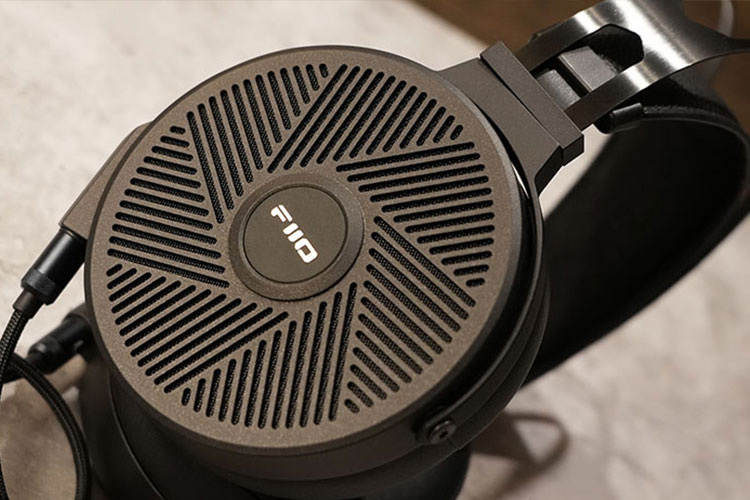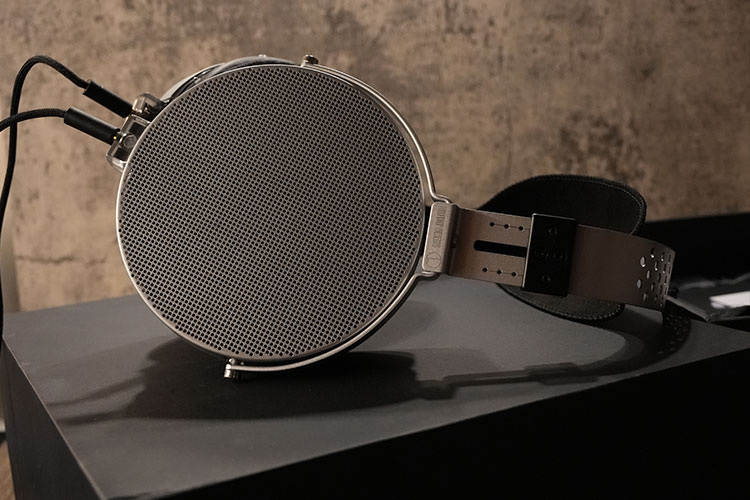Synergy
Efficiency
Despite the high sensitivity rating of the FT5, there is still room for it to scale when paired with powerful gear. This pairing enhances clarity and dynamics, especially in the midrange.
On most devices, the FT5 exhibits a slightly V-shaped tuning, which delivers a clean and dynamic impression. However, the mid-range may sound hollow if it is not adequately powered.
If you find that the FT5 sounds flat and dull, it is recommended to connect it to an amplifier or a more powerful Digital Audio Player (DAP) to boost the dynamics and enhance the harmonic range.
Additionally, it is highly unlikely the FT5 will pick up any unwanted noise, even at higher gain settings. However, it is worth noting that the FT5 is quite sensitive to gain levels, and it is recommended to fine-tune the gain settings to achieve the best tonality for your listening preferences.
Pairings
The FT5 demonstrates remarkable adaptability to different pairings, resulting in a well-defined and agile bass response. When switching between different gears, the most noticeable difference lies in the mid-bass intensity and the subtle vocal harmonics.
These aspects are more pronounced and exhibit better presence when the FT5 is properly driven and will contribute to enhanced airiness and the overall tonal balance.
When using the FT5 with the M11 Plus ESS DAP, it can go loud and resolve in the lower frequencies though the presentation is flat. The vocals sound more laid-back, and the bass leans towards a muted presentation.
Increasing the gain level helps enhance the texture, particularly in the upper mids. However, I find that the FT5 lacks musicality and requires more power to shine.
When testing the FT5 with the FiiO R7’s balanced output, there are ample dynamics and a satisfying sense of meatiness in the mid-lows. The rumble that was absent on the M11 Plus ESS is now restored, and the sound feels more expansive on both ends of the frequency spectrum.
Overall, there is a strong and dynamic presentation with a fast and punchy impact, accompanied by an emphasized sense of airiness which pairs well with Pop music and Jazz genres.
To enhance the density in the bass, overall control, and articulation of the FT5, it benefits from a powerful decoding source that can provide sufficient swing to drive the FT5 effectively.
For instance, the RME ADI 2 Pro delivers precise extension in the treble region, enabling swift and accurate delivery of high-frequency details.
Although the lack of a balanced connection may limit the expansiveness of the soundstage, the FT5 exhibits a more euphonic sound signature, a more realistic stage, and more natural 3D imaging when paired with the ADI 2 Pro.
Select Comparisons
Moondrop PARA
Technical
In the previous Moondrop PARA review, we included the FT5 in the comparison section. The two planar headphones continue to display distinct characters in tuning after more burn in time.
The PARA has a larger 100mm driver compared to the 90mm on the FT5, it has an impedance of 8Ω and a less sensitive rating of 101dB/Vrms, compared to the FT5’s 36Ω, 110dB/Vrms.
Both designs can sound quite loud on even smaller outputs, but they respond to sources differently.
Design
Positioned in a more friendly price bracket the PARA has a minimalistic build in silver sand-blasted finish. The FT5 in comparison looks stealthier and cooler, and the build quality is quite a lot better.
The hinges are also smoother and the whole package is more appealing compared to the cleaner and bare-bone design on the PARA.
Performance
The PARA requires better current output to shine as well as decoding power to strengthen its texture in the mids.
The FT5 is more adaptive to different amplifiers that have higher voltage swings, such as Turbo gain modes that could help further push its dynamics.
On weaker outputs, the FT5 can extract more intricate details and it is more resolving and controlled no matter what the pairing is, while the PARA is cleaner in tone being not as mid-bass intensive.
When connected to the FiiO R7 for testing, both headphones showcase the strengths of planar magnetic designs, particularly excelling in areas such as transient response and fast response.
The FT5, in particular, demonstrates impressive accuracy. Additionally, it is worth noting that the FT5 exhibits a firmer and more detailed bass reproduction despite its driver being smaller, such enables it to effortlessly capture intricate drumming details.
The PARA is more forgiving and the tuning sounds smooth and clean in the midrange, which allows it to work well with different voices without altering the tone too much. There is also stronger openness and focus on harmonics compared to the FT5, which is cleaner and slightly shyer in boosting vocal details.
This is quite a contrast to the FT5 which places more focus on the bass and sounds richer with instruments, as well as expressing the depth and resonant timbre of darker voices.
Moondrop Venus
Technical
The Venus is the current flagship from Moondrop and the way it is tuned. Also, its specification is closer to the FT5 than its siblings the PARA.
The Venus has a 100mm driver at 2 microns thickness and 1μm of silver deposited on the circuit, it features Finite element analysis (FEA) technology for examining how the material design affects the technical performance.
The impedance of the Venus is rated at 18Ω at 1kHz, while its sensitivity is rated at 100dB/Vrms.
Design
When I put the Venus and the FiiO FT5 together, their designs contrast significantly. The Venus showcases a fun industrial aesthetic, while the FT5 features a stealthier paint job.
I find the Venus to have a more prestigious appearance. However, when I handle the two headphones, I notice that the FT5 is noticeably more rigid in structure, and its hinges operate much smoother.
The finish on the parts and the top coating also exhibit a higher standard on the FT5. This demonstrates FiiO’s stronger design capacity and manufacturing prowess.
Performance
Comparing using balanced cables, the first observation is that the FT5 sounds quite a bit louder under the same output setting.
Switching to a dongle there is more difference heard as FT5 still holds a pretty firm image, and the Venus sounds more smoothened and less detailed especially in the two ends when underpowered, though its output is still clean and rather responsive.
It is obvious that the Venus is demanding more from the output source to sound as dynamic as the FT5 and it has a stronger character than the neutral-warm FT5.
When connected to more powerful outputs like the K9 Pro ESS, the FT5 presents a more colored sound profile more elaborated in the mid-lows.
In contrast, the Venus tilts towards the treble, delivering a cooler tone that brings out sparkling details in the high frequencies with clean and impactful bass.
This treble emphasis works well for game music and softer voices, similar to the PARA model, but the Venus exhibits even more energy and sometimes gets overly hot, though that makes woodwinds and some softer voices brilliant in tone and brings out more details in their overtones.
In comparison, the FT5 maintains better control and intricate nuances, without any excessive peaks. It offers a controlled and refined performance, preserving all the subtle details in the music especially when comparing at very high volume.
Our Verdict
The FiiO FT5 delivers a resolving and immersive bass experience with rich nuances and textures. The linearity in tuning echoes the planar design principles, and even at high volume, the FT5 maintains a delicate and detailed sound reproduction.
The unique cable jacks deterring after-market options and choice of stock pads may raise questions, as it may sound damped and muffled. However, they can still be suitable for outdoor listening.
Overall, the FT5 offers the most enjoyable performance and package, and its sensitivity makes it highly versatile to find a good pairing. If you are a bass lover planning to experience planars in a portable setup, the FT5 could be a good pick.
FiiO FT5 Technical Specifications
- Frequency response: 7Hz-40kHz
- Driver: 90mm Planar Magnetic
- Driver Material: PAR diaphragm + aluminum alloy coils,
- Impedance: 36ohms
- Sensitivity: 110dB/Vrms(@1kHz) 96dB/mW (@1kHz)









